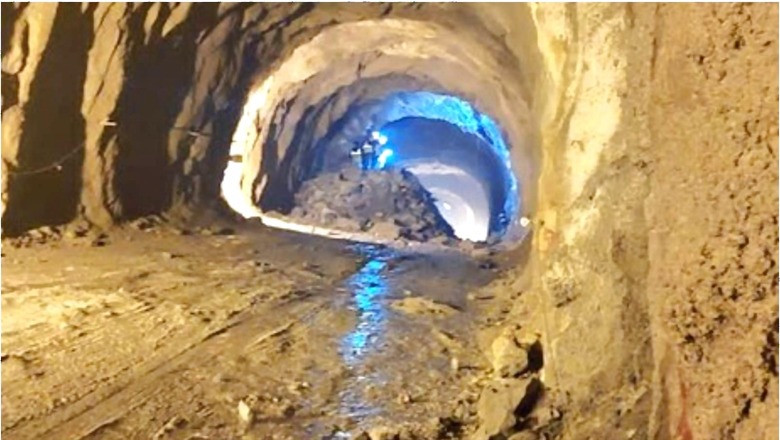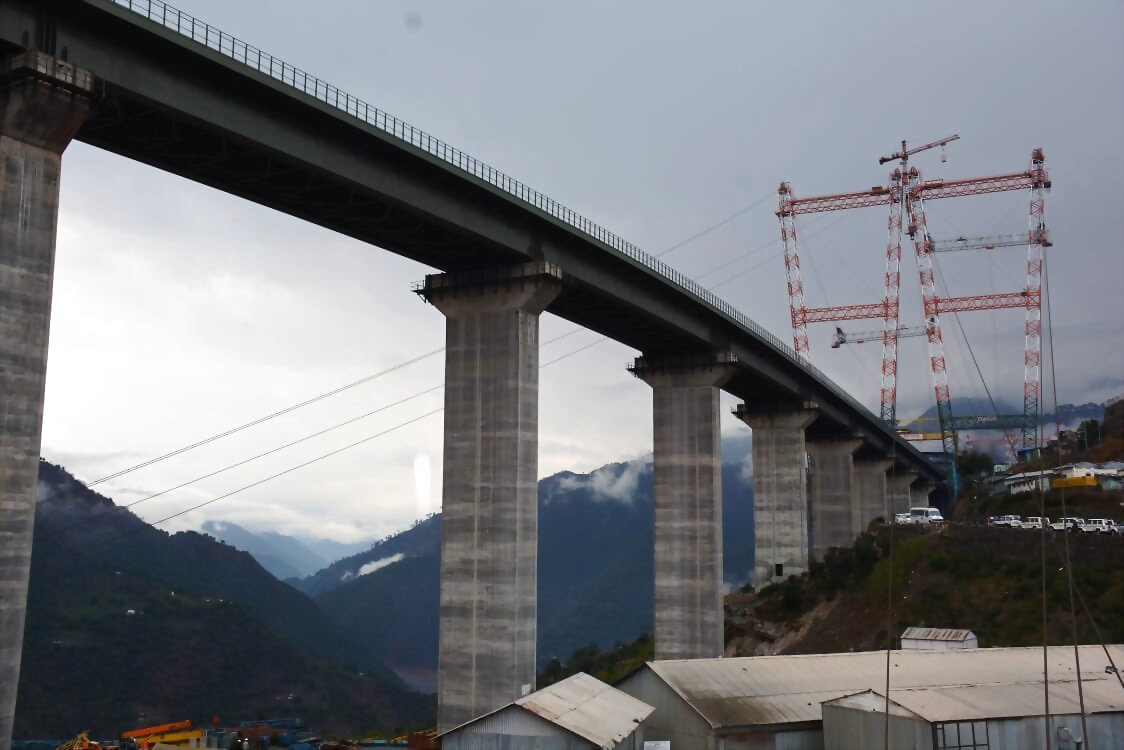
views
India is expected to get the railway bridge that will connect the Kashmir valley to the rest of the country. The Udhampur-Srinagar-Baramulla Railway (USBRL) project is the Indian Railways’ most challenging work post-Independence. Once completed, the Chenab Bridge, which is situated at 359 metre above river bed, and is 1.32-km long, is expected to withstand winds of up to 266 km/h while remaining unaffected by grenade blasts.
The bridge, which is likely to be ready by September, has been built out of 28,660 metric tonne of fabricated metal, 1 million cubic metre of earthwork and 66,000 cubic metre of concrete.
Lalit Chandra Trivedi, who is an ex-officer of Indian Railway Service of Mechanical Engineers, and currently the Chairman of the Rail Division of the Indian chapter of the Institute of Mechanical Engineers, has talked to News18 and shared some insights regarding the Chenab Bridge.
How Successful This Work Would Be?
The project is running behind the schedule, but that was expected as never had a Railway line in such a tough geography was attempted.
The project is successful in proving the technical prowess of India by creating assets such as the unique bridge on the Chenab river, and the construction of long tunnels in geo-technically difficult terrain.
Overall, in spite of the challenges faced, the project once completed will rank among the biggest engineering feats of independent India.
Challenges and the Way Out
The project has undergone alignment changes. Constructing the Chenab bridge was another major technological challenge, the tunnels had to be carved out in geo-technically sensitive seismic zones, and the designer had to make the structures earthquake-proof, designs had to provide for the threat of floods in the valley area. In addition, the gradient of the section has been kept within new norms.
Major Benefits
• Integration of Kashmir valley and other frontier areas by rail with the main landmass of the country, ending historical isolation
• Economic development of the people of the region
• Positive impact on the environment as Railways consume 1/7th of energy required for similar transportation requirements by Road and 1/15th of that by Air
• Technologically speaking, this project has taken India to a much higher level of advancement comparable to the globally best
• Strategically from a defence angle now the movement of defence forces and other supplies will take much less time
• New industries will now be attracted to this region
• Tourism will get a big boost
The USBRL Project was originally estimated to cost Rs 27,949 crore, but according to Northern Railways’ February 2022 standing report, it has already spent Rs 26,964 crore, with 81% of the work completed.
However, the current value estimate is more than Rs 37,000 crore.
The railway line, which is entirely supported by the federal government, has been in the works since 2002 when it was designated as a national undertaking.
However, after numerous setbacks such as feasibility objections, land acquisition concerns (1,900 hectares required to be acquired), squabbles with the Jammu and Kashmir’s forest division, it is now nearing completion, with April 2023 provisionally set for the inauguration.
However, it is expected that the USBRL will allow the rail community to reach deep into the heart of the Kashmir valley.
According to the project’s official website, for the execution and further monitoring of the work has been divided into:
Leg 1: Udhampur to Katra, 25 km — work completed and section commissioned in July 2014.
Leg 2: Katra to Banihal, 111 km — work in progress
Leg 3: Banihal to Quazigund, 18 km — work completed and section commissioned in June 2013
Leg 4: Quazigund to Baramulla 118 km — work completed and section commissioned in three phases, last phase commissioned in October 2009.
The website also said: “This project is, perhaps, the most difficult new railway line project undertaken on the Indian subcontinent. The terrain passes through the young Himalayas, which are full of geological surprises and numerous problems.”
“The execution of the work in the balanced portion between the Katra and Banihal (111 km) has been divided among three agencies as under — Northern Railway — 5 Km, KRCL — 53 Km and IRCON — 53 Km.”
However, under this project, there are some engineering achievements, which include the Anji Khad Bridge, part of the second leg, and is being built between Katra and Reasi, 7 km south of the Chenab Bridge, over the Anji river, a tributary of the Chenab.
Additionally, the Anji Bridge may be India’s first cable-stayed bridge, with its weight supported by metal cables connected to large pylons (towers) rising well above the bridge from the riverbed below.

According to the USBRL website: “Construction of Anji Bridge is extremely difficult and an engineering challenge. Although it is smaller in comparison to Chenab Bridge, it is also an important bridge in this section and after construction, it will be 195m above the river bed and the main span across a steep slope of Anji Khad River will be 290 meters. AnjiKhad Bridge is the country’s ‘first cable-stayed bridge’ on Indian Railways.”
This bridge has been divided into three:
• 120-m long approach viaduct (called “ancillary viaduct”) on Reasi side
• The main bridge, crossing the deep valley (473.25m cable-stayed portion
• Central embankment (94.25m), located between the main bridge and an approach (ancillary) viaduct
The alignment of the USBRL necessitates the construction of a huge number of tunnels and bridges in extremely rough and hilly terrain, with Himalayan geology at its most severe and intricate.
It is worth noting that this project includes 38 tunnels (a total length of 119 km), with the longest tunnel (T-49) measuring 12.75 km.
While the Northern Railways has not provided an estimate of how long the Udhampur-Baramulla rail journey will take, Kashmiris expect the time between Srinagar and Jammu to drastically reduce once the entire track is commissioned, compared to the current highway transport, which takes over 5 hours.
With snow slicing machines already in place on the finished legs, they are also prepared for all-weather rail connectivity, in contrast to the current situation, in which the Jammu-Srinagar freeway is regularly blocked for hours (or even days) due to heavy snowfall in the winter or landslides during the rains.
Read all the Latest News India and Breaking News here



















Comments
0 comment